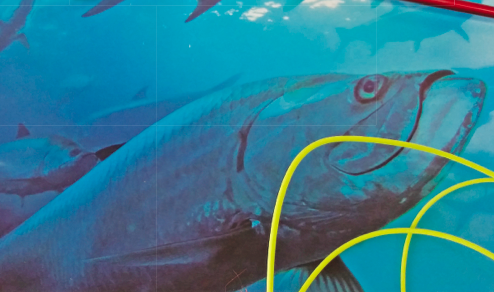By Rene J. Hesse
[dropcap]I[/dropcap]t has been said by many of the greats in fly fishing that it’s all about the loops. When you are talking about the dynamics of the cast, that statement is so true.
Here is a simple definition of a cast: You need the weight of the line against the rod tip so when you move your hand in the casting stroke, the weight of the line will bend the rod. Whatever direction the rod tip is going when you accelerate and stop, that’s the direction the line will go. The line will over come the rod tip and form a loop. The energy transferred from the rod will transfer to the line and pull the fly along to the target. Remember we are casting the line, not the fly.
We determine the size and shape of the loop by the path of the rod tip. If you learn to watch your loop form as you cast, you will be a better fly angler. Different casts require different loop shapes and sizes. A small loop will have a leading edge about the size of a volleyball. A medium loop, a beach ball and a large loop the size of a monster-truck tire.
For terminology sake, we will define the parts of the loop and how they are formed. We will call the part of the line closest to the rod tip the “rod leg.” Next, the part of the line in the shape of the volleyball or tire is the “leading edge of the loop.” Last, we will call the part of the line from the loop to the fly the “fly leg.” If you watch your line travel through
the air, you will be able to tell what your rod tip is doing. The path of the rod tip will determine the fly leg before you stop the rod. So if you move the rod tip like a wiper blade, you will get a rounded fly leg of the loop. If you make a smooth constant rate of acceleration to a stop, you will have a straight fly leg. That is a good start to form a tight loop.
Next is loop size, and you will adjust it when you stop the rod. If you stop the rod tip high, just under the on-coming line of the fly leg, you will get a tight loop. If you drop the rod tip down, it will open up the loop. The farther you drop the tip after stopping the rod, the larger the loop face. That will adjust the shape of the rod leg as well.
We need different shaped loops for different casts, tight loops to cast farther or shoot under trees, larger loops for heavy rigs or weight flies and medium loops for just regular situations.
Get used to seeing your loops form. Digest the loop dynamics, and try adjust- ing the size and shape of the loops, and you can become a better fly caster.
[easy-social-share]

